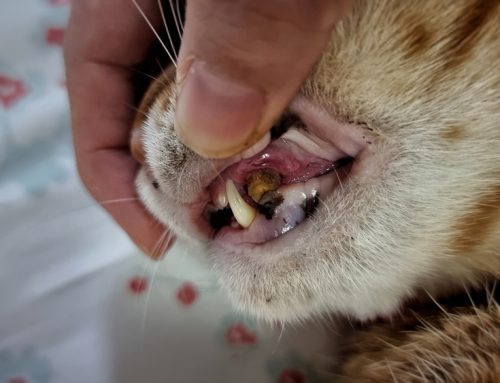What exactly is a mast cell tumor? Mast cells are normal inflammatory cells responsible for releasing histamine as part of an allergic response. When disturbed, the mast cells releases granules containing histamine, causing swelling, redness and itchiness of the surrounding tissue. A mast cell tumor a malignant skin tumor that is composed of an abnormal collection of mast cells.
Signalment
Mast Cell Tumor (MCT) is one of the most common types of cancer diagnosed in our pets, accounting for up to 20% of all skin cancers. MCTs are most often diagnosed in dogs, although cats can also develop them. Bully or Boxer-type breeds, including Boxers, Pit Bulls, Boston Terriers, Pugs, English and American Bulldogs, as well as retrievers such as Labrador and Golden Retrievers, are predisposed to developing mast cell tumors. They are most often diagnosed in middle-age to older pets. However, any breed of any age can develop them.
Clinical Signs
Most often, the only sign a mast cell tumor has developed is a new skin growth. Unfortunately, MCTs can look like anything. Most often, the tumor is a swelling within the skin itself. It may or may not be covered by hair. In some cases, the tumor may be itchy for the pet, causing the pet to scratch or lick at it. It may develop an open sore over the growth. Other times, the pet doesn’t seem to notice the mass at all. MCTs can look like benign skin tags, warty growths, insect bites, open wounds or lump. Many times, if bumped or squeezed, the mass will swell (due to the release of histamine) and the swelling often resolves over a few hours.
Pets in advances stages of mast cell disease, especially those with metastatic disease, may show loss of appetite, vomiting, lethargy, lymph node enlargement or other signs of systemic illness. Metastatic MCT can cause ulcers in the intestinal tract as well as enlargement of the spleen or liver, dependent on where the cancer has spread.
Diagnosis
The most accurate way to diagnose a mass as a mast cell tumor is to perform a fine needle aspirate and identify the characteristic cells under the microscope. In very advanced stages of this disease, the cells may be so abnormal that they may be difficult to identify; however, in most cases MCT is a diagnosis that can be confirmed in the veterinary clinic. Once a diagnosis is made, your veterinarian may elect to run bloodwork or perform advanced imaging studies (such as radiographs or ultrasound) to look for the spread of this cancer to other organs. If the mass is solitary and relatively small, these additional diagnostics may not be performed. A biopsy will be performed on the mass (often after removal) to confirm the diagnosis and stage the cancer to give the most accurate prognosis.
Treatment
The first step for treating most mast cell tumors is surgical removal. Because these tumors release granules of histamine into the surrounding tissue, the surgical excision must be wide to give the best chance of removing all the cancer cells. Depending on the location and extent of the tumor, surgical removal may include skin removal only, skin and deeper tissues such as muscle, or potentially amputation.
A biopsy of the removed tissue will be submitted. The biopsy is important for three reasons. First, it confirms the diagnosis of MCT. Second, it stages the tumor to indicate how aggressive it is. MCTs are staged from grades 1 – 3, with Grade 1 being the least aggressive and the most likely to be cured by surgery alone. Grade 3 MCTs are the most aggressive and often have already metastasized by the time surgery is performed. Finally, the biopsy will determine the size of the “clean margins”, or the amount of tissue clear of cancer cells. In some instances, it is impossible to remove all the cancer cells, and in this case the tissue is described as having “dirty margins”. The larger the “clean margins”, the better.
If the stage of MCT is advanced, or if the margins are not “clean”, additional treatment will be necessary if a cure is sought. If no evidence of metastasis is found with diagnostics, radiation may be considered. If metastasis is a concern, radiation and chemotherapy may be used to try to fight the remaining cancer cells.
Prognosis
The good news is that in most cases of mast cell tumor, a cure can be achieved with surgery alone. Less than 20% of all MCT cases are Grade 3 MCT, the most likely to be fatal. The vast majority of Grade 1 and Grade 2 MCTs can be completely cured with surgery alone or surgery in combination with radiation and/or chemotherapy. Unfortunately, just because one MCT is cured on a pet does not mean (s)he will not develop another MCT in the future. Due to genetic predisposition, some dogs develop MCTs every few months to few years. It is important to check your pet frequently for new lumps or bumps and bring them to the attention of your veterinarian so they can be appropriately diagnosed and treated if required. Mast cell tumors that are not appropriately treated have the potential to worsen and metastasize.




Leave A Comment